To Contact Me


Page last updated
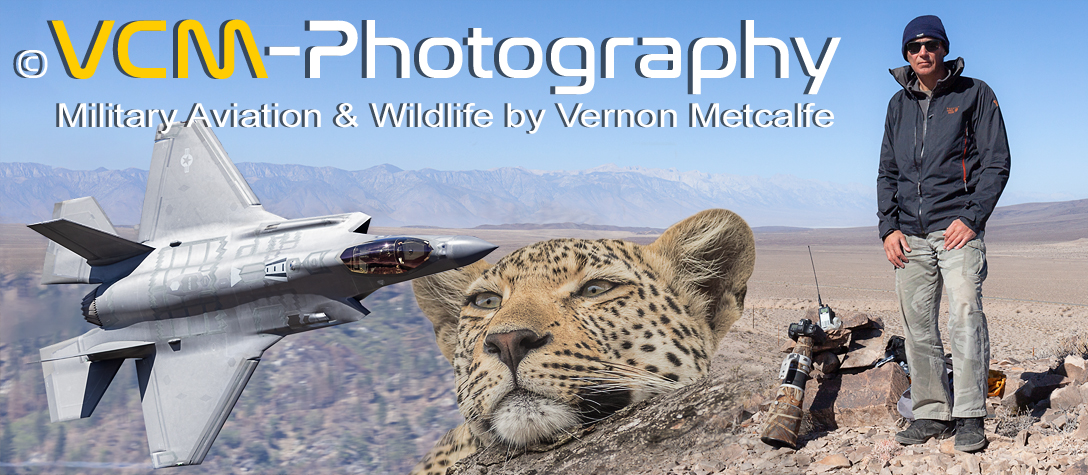
Many people have asked what equipment I use to take my aviation and wildlife photographs. The following is a brief technical description of the equipment used (Past & Current) to date.
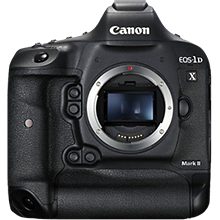
Canon EOS 1DX Mk II (Current)
Released in April 2016 the 1DX Mk II has a 20.2 megapixel Full‑Frame (36 x 24mm) CMOS sensor with
dual DIGIC 6+ image processors, enabling a blistering frame rate of 14fps. The fast and very accurate
autofocus sytem is aided by a new 360,000 pixel RGB+IR metering sensor with a dedicated DIGIC 6 processor,
while an improved Al Servo III+ predictive autofocus algorithm improves subject tracking. All 61 autofocus points,
41 being cross‑type are individually selectable and have 24 percent more coverage. ISO flexibility is enhanced
with a native ISO 100‑5200 (expandable to 50‑409600). The ISO performance and dynamic range is vastly improved
over the Mk 1 and I regularly use ISO's of 3200 and sometimes beyond in low light situations.
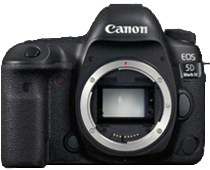
Canon EOS 5D MkIV (Current)
Released in September 2016 the Mk IV has a weather‑sealed magnesium‑alloy body
featuring a 30.4 megapixel Full-Frame (36 x 24mm) CMOS sensor with an ISO sensitivity of 100‑102400
(expandable to 102400). A DIGIC 6+ image processor, the same as used in the 1DX MkII allows for 7fps continuous shooting.
The 61 point autofocus system (41 being cross‑type) has a 24% increase in vertical coverage over the Mk III,
with the centre point sensitive to ‑3 EV, while a dedicated 150,000‑pixel RGB‑IR metering sensor ensures accurate exposures.
A new 1.62M dot 3.2" touchscreen allows one to easily navigate the menu system and what i find very advantageous is the
ability to touch‑to‑focus in Live View (and in video).
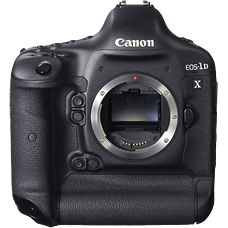
Canon EOS 1DX Mk 1 (Past)
Released in March 2012, the 1DX had a 18.1 megapixel Full-Frame (36 x 24mm) CMOS sensor, with a DIGIC‑4
and dual DIGIC 5+ image processors, enabling a frame rate of up to 12fps with full autofocus and metering
functionality. The 61 point autofocus system with 41 being cross‑type, was assisted by a 100,000 pixel metering
sensor which helped create a fast and reliable autofocus sytem, capturing images sharply even in low light with
excellent noise control. The autofocus menu had also been revamped and made more simpler and user friendly than
the system used in the 1D MK IV. The new image processors and the use of gapless microleneses
(the first on a Canon full‑frame sensor) enabled the 1DX to shoot at greater ISO sensitivities, with a standard
range increased by 2 stops to give ISO 100‑51200 (expandable to 50‑204800).
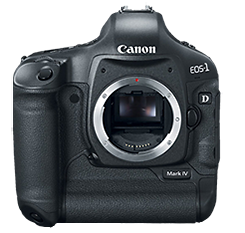
Canon EOS 1D Mk IV (Past)
Released in December 2009, the 1D Mark IV had a 16.1 megapixel CMOS APS‑H sized (27.9 x 18.6mm) sensor
with high speed Dual DIGIC 4 processors, enabling images to be captured at a blistering 10fps in 14‑bit
RAW format. Given the notorious autofocus problems with its predecessor the 1D Mk III, the Mk IV had a completely
new autofocus system, with 45 user-selectable points, 39 being f/2.8 sensitive cross‑type. At first I found the
complexity of the 19 autofocus/drive group custom menu functions a little daunting, but once understood and set-up
correctly gave very good results. The Mk IV had the best low light capabilities of any Canon camera at the time,
with an ISO range of 100‑12800 (expandable to 102400). I rarely went above ISO 1600 if avoidable, as noise became
more evident in the images.
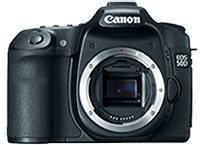
Canon EOS 50D (Past)
Released in October 2008 the 50D was basically a 40D body wrapped around a new CMOS APS‑C sized
(22.3 x 14.9mm) 15.1 megapixel sensor. Re-designed sensor photo‑diodes and new gapless micro‑lenses,
which despite the higher pixel count, were claimed to help reduce noise and give expanded sensitivity
throughout the ISO range. For myself, the new 9 point cross‑type diamond array autofocus sensor and DIGIC 4
image processor allowing 6.3 frames per second in 14‑bit RAW format, made the 50D a major improvement
upon the 20D.
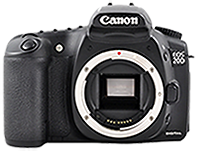 Canon EOS 20D (Past)
Canon EOS 20D (Past)
Released in August 2004 the 20D was my introduction to the world of digital photography.
Designed around a 8.2 megapixel CMOS APS‑C sized (22.5 x 15mm) sensor, the camera had a 9 point
TTL autofocus system, with a DIGIC II image processor allowing 5fps in RAW format.
This was a reliable well built camera which served me for many years
and one which I initially used for my ‘Military Low Flying Aircraft Photography’.
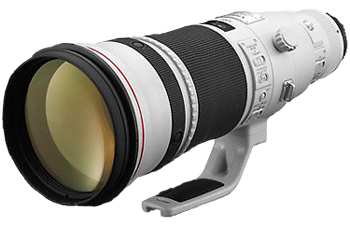
Canon EF 500 f4L IS II USM Lens (Current)
Introduced in June 2012 weighing 7.04lbs (3190g) the Mk II like its predecessor the Mk 1
is a popular lens used by wildlife, nature and sports photographers. Constructed of lightweight magnesium‑alloy
and titanium reduces the weight over the Mk 1 by 1.5lbs (680g) and makes the lens more user friendly
for hand‑holding and carrying. Fluorite coating on the front and rear lens elements with two ultra‑low dispersion
(UD) glass lens elements to tackle aberrations and distortions creates a camera lens with outstanding quality.
A ring‑type ultrasonic motor (USM) with a 4‑stop image stabiliser with multiple IS modes gives
extremely fast and quiet autofocus and IS performance.The lens is weather sealed and compatable with extenders which
maintain the fast autofocus speed.
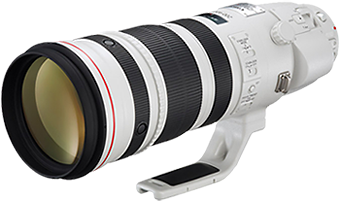
Canon EF 200-400 f4L IS USM Extender 1.4x Lens (Past)
Released in May 2013 the Canon 200-400mm telephoto lens with an integrated 1.4x extender provides a focal range
of 200‑400mm at f4 and 280‑560mm at f5.6 making it an ideal lens for wildlife photography.
A great focal length range gives one the flexibility in composition which a prime lens does not afford. The extender
can be engaged with the flick of a lever omitting the chance of dust and moisture entering into the lens and camera.
With a very accurate autofocus sytem and the use of advanced optical materials such as fluorite crystal, along with a
4‑stop rated image stabilisation system provided in three IS modes, the lens produces excellent image quality in terms
of contrast and sharpness throughout the focal range. Although the autofocus system is very fast throughout the
200‑400mm f4 focal range, I find it tends to slow down with the extender engaged, so at the longer
focal lengths I don't find it ideal for fast action photography.
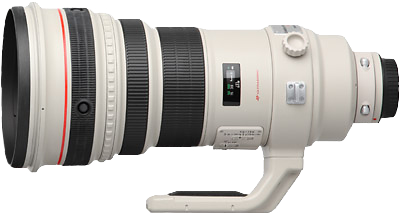
Canon EF 400 f2.8L IS USM Mk 1 Lens (Past)
Big, heavy, with exceptional build quality and weather sealing to protect against dust and moisture.
Superior optics and a very fast and accurate autofocus system, made the 400 f2.8 Prime Lens the choice for professional
field/track sporting photographers. Weighing 11.8 lbs makes using and carrying the lens for any prolonged period very tiring.
(It's successor the Mk II released in August 2011 weighs a much reduced 8.5 lbs). To make life easier I use mine
coupled with a Wimberley Plate mounted on a BushHawk shoulder Mount BH‑320D.
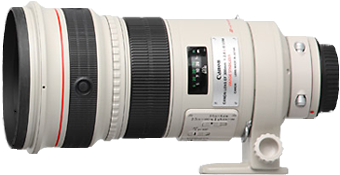
Canon EF 300 f2.8L IS USM Mk 1 Lens (Past)
Introduced in 1999 as one in a new range of Canon EF Lenses, the 300mm f2.8 Prime lens was regarded as the highest quality
image producing lens in the Canon catalogue. (It's successor, the Mk II released in 2011 carried on the legacy).
A super fast and accurate focusing system were the trademark of this lens. A three position focus limiter switch
allowed focusing distances to be limited to a specific distance range, thus aiding focus lock times.
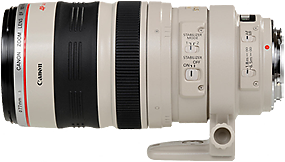
Canon EF 100-400 f4.5-5.6L IS USM Lens (Past)
Released in 1998 (now superseded by the Mk II) the 100‑400mm Lens with its long focal length and focal length
range was a very popular wildlife and sporting lens. The lens had good quality optics with a push/pull type zoom mechanism (as
opposed to a zoom ring) and was noted for producing sharp images at all focal lengths. The only drawback in my opinion was its
low light capability for the fast action photography of Military Low Flying.
Canon EF 1.4x III Extender (Current)
To compliment my current Canon L-Series Lens I have a EF 1.4x III Extender (superseded the EF 1.4x II in August 2010).
The 1.4x Extender/Teleconvertor increases the focal length of a lens by a factor of 1.4x, but will reduce the effective aperture
of the lens by One Stop. For example, on a 400mm f2.8 Lens the effective focal length will be increased to 560mm, but the maximum
aperture will be reduced to f4.
 Adobe Lightroom Editing Software (Current)
Adobe Lightroom Editing Software (Current)
Adobe Lightroom 6 is the choice of photo editing software which I use in my processing workflow.
Apart from being a photo-editor it is an image management software, which helps one to import, organize and manage files.
Lightroom is a non-destructive editor which I use for retouching and enhancing RAW images, by means such as altering white balance,
exposure, improving tone, lens profile corrections, vibrance and saturations, reducing digital noise and sharpening. To save time,
all these actions can be put into presets, to apply common settings across a group of photos.

